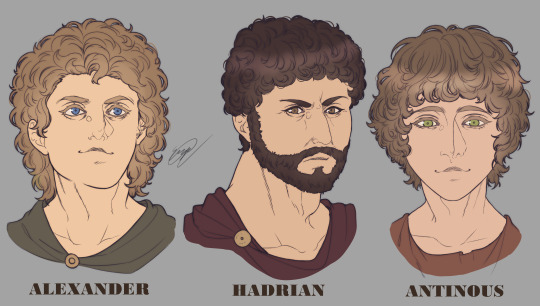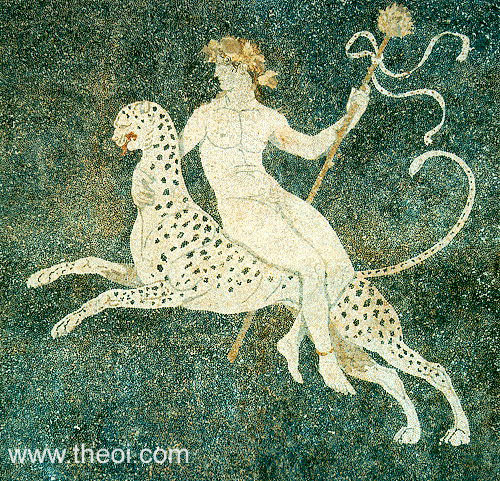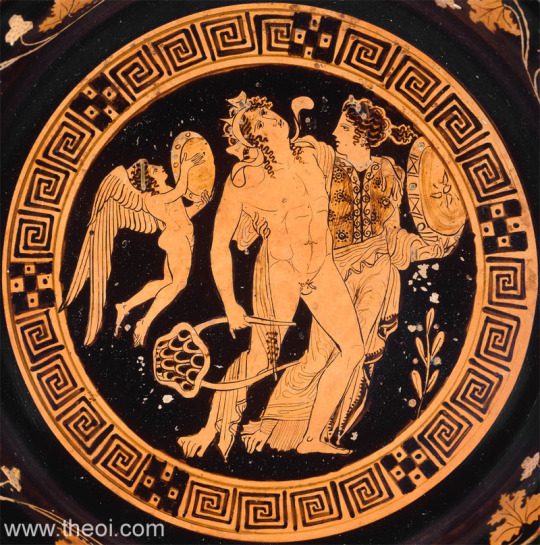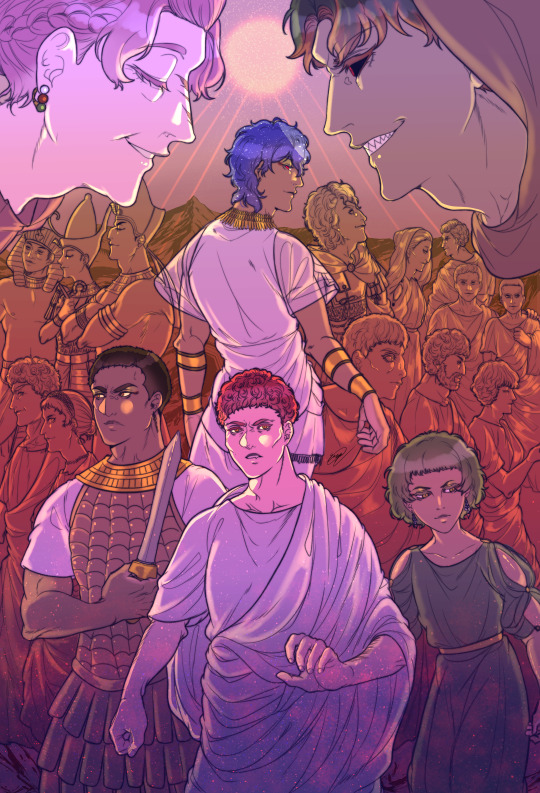#Alexander the Great and Rome
Note
Conversely, if you and Alexander talked only once, what do you think he’d ask you? I guess he wouldn’t be surprised to find out there are professors studying his life and reign more than two thousand years after his death - but what do you think he would ask you about the history of, well, himself?
Interesting question. I think it would be difficult for him to know what TO ask. While it’s possible to forecast a little way into the future (science-fiction authors do it all the time), the further into the future we look, the further off-base we get. Unsurprisingly. Things come out of left field that even the most foresighted can’t anticipate.
For Alexander, I do think he realized that he died too soon, and his empire wasn’t established enough yet. Ergo, one of his first questions would likely be, “So, how fast did it all fall apart and who came out on top?”
He might even be weirdly happy to hear the answer. (Not long.) Why? It proved they couldn’t hold it together without him—which underscores his own uniqueness. I realize that’s self-centered on his part, but don’t all of us, deep down, kinda wanna know we’re irreplaceable? How much more for somebody raised in a society where kleos (glory) and timē (public recognition) were so important? An older king might have been more concerned with his “legacy” after ruling for decades. But Alexander was still young. He didn’t have much of a legacy yet to protect, other than his remarkable success. That nobody else could match it would, I think, have pleased him.
Would he have asked about his family? Probably. But I think it’d be part of the larger question of what happened next and who came out on top.
He’d LOVE that Rome named him “the Great.” In his own day, he was known as “the invincible” anikētos; “the Great” is Roman.
Yet I don’t think he’d have seen Rome coming. I expect he’d predict Carthage as the dominant Western power. Remember that, in his day, Rome wasn’t especially notable. This was still the Early Republic. Plebians were relatively new into the Senate, Rome was nowhere near in control of all the peninsula and just starting the shift from a Greek- and Etruscan-style phalanx to what would become the legion.
Reputedly, Alexander of Epiros (before his death in 331) resented Alexander of Macedon’s early successes, claiming he (Alexander of Epiros) was fighting real men in Italy while his nephew “waged a war against women” (e.g, barbarians). That’s a typical Western-centric view.* At the time, however, Persia had the most powerful army in the world. Whatever Livy claimed, had Alexander brought the Macedonian military machine west instead of east, he’d have mowed through Italy, just like in Greece, Thrace, and Illyria. It took another hundred-plus years of Roman military development to result in the wins at Magnesia or Cenoscephalae. Italy/Rome at that point was just no match for Macedon, much less Macedon under Alexander’s command.
But hoo-boy, he’d want to know about the legion, even if he wouldn’t know enough to ask directly. He might ask about future military innovations.
Also…he’d be PISSED that more people in the West today recognize the name of Julius Caesar than Alexander of Macedon. 😉 “Why didn’t Shakespeare write a play about ME???” But he’d be tickled there are more stories about him in more varied world cultures than there are about Caesar (true fact). IOW, Caesar may be more famous in the West, but Alexander is more famous in the larger world (thanks to the Alexander Romance).
Last, he might ask me about my world. If we assume he knew I was 2300+ years in his future, I think he’d naturally want to know what life is like in my time. I mean, wouldn’t we ask what life would be like 2300 years in our future? He’d probably be fascinated by the changes, although perhaps not the ones we’d anticipate.
Long ago, on a drive from Kentucky back to Nebraska, my son and I had a fun conversation about a fictional interview between Alexander and Stephen Colbert (Ian’s favorite talking-head person at the time). Stephen Colbert would ask Alexander what were the three most surprising things he’d found about the future? Would it be medical breakthroughs? Computers? The rise of democratic states? Flying through the air (and into space)? Etc.
Nope. The three things I think would surprise him the most are:
1. Near-instantaneous speed of communication
2. Easy availability of information (even if it may be wrong)
3. Changes in the importance of religion (at least in some places)
It was such an interesting conversation, I turned it into what’s now the opening Power-point in my World History I class! Ha.
————
* This supposed claim of Alexander of Epiros may not even be real. It’s recorded by Roman Cheerleader Livy, where of course the West is more powerful than the weak, decadent Oriental East.
#asks#Alexander the Great#what would Alexander the Great want to know about the future?#Classics#Alexander the Great and Rome#alternate history#Successor Wars
40 notes
·
View notes
Text

Hellenistic period sardonyx cameo portrait of Mark Antony as Alexander the Great. H. 3.7cm. W. 3.5cm.
Bibliothèque Nationale de France, Département des Monnaies, médaille et antiques, Paris.
Photograph: Bibliothèque Nationale de France.
#mark antony#marc antony#marcus antonius#second triumvirate#history#rome#ancient rome#roman history#roman republic#roman empire#antiquities#ancient artifacts#art#ancient history#ancient art#hellenistic#hellenism#alexander the great#hellenistic art#cameo#greo-roman
479 notes
·
View notes
Text

#well. yeah.#me and half my mutuals are getting our asses served on a silver platter with the og tweet#history fandom#historical figures#rome#ancient greece#alexander the great#winsome’s wailings
1K notes
·
View notes
Text
Something my bf made of me that i can't get over lmao

#ancient history#alcibiades#cicero#alexander the great#octavian#relationship#history#ancient rome#ancient greece
74 notes
·
View notes
Text



(Full view plz)
Some historical characters that will be making an appearance in the webcomic I'm developing!
#webcomic#ancient history#ramesses ii#hatshepsut#amasis#mark antony#cleopatra vii#octavian#augustus#alexander the great#hadrian#antinous#ancient egypt#ancient rome#ancient greece#roman egypt#hellenistic egypt#imperial rome#hellenistic period#republican rome#ptolemaic egypt#shmswart#thefollowersart
85 notes
·
View notes
Text

#I’m fine I’m fine I’m normal I’m fine#dark academia#alexander the great#hephaestion#alexander x hephaestion#ancient greece#academia#history#girls when#dark academia aesthetic#macedonian#ancient greek history#happy ides of march I only care about alexander#but also girls when brutus#girls when et tu brute#brutus#rome#ides of march
316 notes
·
View notes
Text

Roman Marble Over-Life Size Head of Alexander the Great (356-323 BC)
1st century AD
H. 65 x w. 26 cm.
#Roman Marble Over-Life Size Head of Alexander the Great (356-323 BC)#1st century AD#marble#marble sculpture#roman marble sculppture#ancient artifacts#archeology#archeolgst#history#history news#ancient history#ancient culture#ancient civilizations#ancient rome#roman history#roman empire#roman art
68 notes
·
View notes
Text
The myth of Dionysos (3)
For the previous posts, see here and here.

V) The cult of Dionysos : Outside the city, inside the city
Such a god apparently does not have his place in the Ancient Greek city. Séchan-Lévêque reminds us that his religion, at the same time joyful and wild, is centered around the “thiasus”, that is to say a gathering of male and female beings joining outside of any civic or familial setting. According to Euripides’ description and to the various visual depictions of Ancient Greece, all the cultural elements surrounding Dionysos are the very opposite of the rational organization of a State. His cult takes place on the countryside, in woods and mountains. It takes place at night. The participants wear an animal skins over their clothes (or replacing their chiton), their hair is wild or crowned by ivy or laurel, their belt is made of a snake or a baby leopard hangs from it ; in one hand they hold the thyrsus and in the other a small animal (hare or young fawn). The music played for Dionysos is strange: flutes, tympanum and castanets. His ceremonies are chaotic: wild dances, convulsions, exhausting races. His sacrifice is performed by ripping apart animals before eating their raw flesh. The thiasus could be made of men, but the most famous of all the thiasus is the female one, and its members are called the Menads, the Bacchants, the Thyads, the Bassarides… Ordinarily, women of Ancient Greece were locked up inside the gynaeceum, so to have them becoming wild and savage makes the cult of Dionysos a unique one, set apart by the official religious events of the city, since he breaks all urban religious rules. Similarly, the mysteries of Dionysos unite together men and women, citizens and slaves, which meant breaking apart the Ancient Greek social hierarchy.
And yet, this Dionysos that destroys the order of the city is greatly honored at Delphi, the domain of the Greekest of all gods, Apollo. The Pythia reminds the audience, in Aeschylus’ Eumenids, that she honors the nymphs over which rules Bromios and his Bacchants, with explicit references to the story of Pentheus. Every year, during the three months of winter, while Apollo leaves for Hyperborea, Dionysos replaces him. And every two years, the Thyads of Delphi and the Bacchants of Athens, holding torches, celebrate on mount Parnassus the son of Semele. In the adyton of Apollo’s temple, legends claimed Dionysos’ tomb could be found. The poets frequently exchanged the names and nicknames of the two deities: Aeschylus wrote in Bassarids of “Apollo with ivy, a bacchant and a seer”, while Euripides in Likymnion wrote of “Lord Bakchos, friend of the laurel, Pean-Apollon with the beautiful lyre”. As such, despite Nietzsche’s strict opposition between the god of harmonious restraint and the deity of savage drunkenness, the two gods are actually far from being polar opposites.
Dionysos also finds a home at Athens. We already saw several of the festivals in his honor there: Apaturia, Anthesteria, Oschophoria… But to those can be added the agrarian Dionysia, the the Lenaia, and especially the great Dionysia: during those, contests of dithyrambic, of tragedies and of comedies were held, gathering an audience coming from all four corners of Greece. Traditionally, the tragedy, the “tragodia”, is read as meaning “the song of the goat”, tragou-ôdè, since the goat was the animal traditionally sacrificed to the god. During the first day of the Great Dionysia, the statue of Dionysos was carried inside the “orchestra”, at the very heart of the city. And during the contests, a place of honor was kept for the priest of Dionysos. The marginal god clearly earned his place among men and Olympians.
Because, according to the Bacchants, inside the Dionysian chaos, there si a superior order, an “eukosmia” that unfortunately Pentheus fails to see, since he is a young tyrant filled with hubris. However the wise rulers of Athens did perceive and honor this superior order – unlike the Roman Senators that, in 186 BCE, harshly repressed any participations to the Bacchanals.

VI) Dionysos in service of political and religious doctrines: various uses
Multiple, complex, contradictory and shapeshifting: the god offered to the political and religious domains a very malleable material. For example, there are obvious links and mutual influences between the eastward journey of Dionysos and the eastward journey of Alexander. Alexander, just like his soldiers, and just like his historians, know of the story of the god’s travel to the East – the Dionysos of Euripides, in the Bacchants, said himself: “I left Lydia with his gold-fertile fields, I left the plains of Phrygia for the sun-burned plateaus of Persia, the walled cities of Bactrian, and the land of the Medes, frozen by winter ; and happy Arabia ; and finally all of Asia, laying by the salted waters…” Alexander took his army on the very steps of Dionysos. Of course, the Great was going to make the god the patron of his expedition, and as such Alexander was celebrated as the “new Dionysos” (a title that future rulers of Alexandria will also bear). The parallel grows stronger with the encounter by Alexander’s army of a town named Nysa, located near the mount Meros (a word that sounds similar to the Greek word for “thigh”) – the prince claimed the people of Nysa were descendants of the Greek people that Dionysos took with his on his own journey. However, in a complete circle, the adventure of Alexander the Great influenced greatly Dionysos’ own travels. India, for example, was never named in the tale of the Bacchants. But after the exploits of Alexander, Dionysos became the conqueror of India. Poets, painters and sculptors all depicted him taking part in this “war of India” that Euripides had never heard about. In the 5th century CE, this tale grew to enormous proportions thanks to Nonnus’ Dionysiaca, an epic in 48 chants, and where the Indian travel is described from chant 13 to 40.
Despite the recent doubts of some scholars, there is a possibility that Cesar and Augustus used for their political agenda the glory of this god celebrated everywhere in the oriental part of the Roman empire, and even in Rome itself – by both the Greco-Oriental population and the administrative elite of the Hellenism. Indeed, the assimilation between Dionysos and the Latium god Liber Pater had been done for a long time by now, and that despite some strong oppositions (such as the stern repression of the cult of Dionysos in 186). And the success of this religion was noticed by the political authorities. Servius commented what Virgil wrote in his Bucolics, about how Daphnis, on a “chariot pulled by Armenian tigers”, was the first to introduce the “thiasos of Bacchus”. Servius reminds his reader that in truth, it was Cesar that first brought the “mysteries of Liber Pater” to Rome – and as such behind the triumph of Daphnis, one reads as much the travels of Alexander as the exploits of Cesar… Two men that Augustus claims to be the heir of.
This “politic of Dionysos” knew its climax between the second and third century CE, through Hadrian the philhellenic, who demanded to be called the “new Dionysos”. In the same tradition as Alexander the Great, and as the many Hellenistic rulers, from Gallian (who, while leading a double fight against the Barbarians and the Christians, wanted to return to the Greek tradition) to Elagabalus (who had the habit of driving a chariot pulled by lions and tigers).
Dionysos was also used for philosophical and religious agendas. As such, the Orphics, reused in their beliefs the myth of the god’s murder by the Titans. Marcel Detienne wrote about how the myth of Dionysos was the perfect illustration for the main teaching of Orpheus: refrain from murder. In its double sense of 1) do not kill your fellow human being ; but also as 2) do not eat meat. On top of that, Dionysos’ resurrection echoed the belief in palingenesis of the disciples of Orpheus.
With this context, it makes sense that Christian writers, such as Clement of Alexandria or Firmicus Maternus, focused their attacks onto a myth that, for them, was a caricature of their beliefs and a parody of the sacraments of their own religion. Passion and Resurrection (Gregory of Nazianzus even used three hundred verses of the Bacchants in his Christus Patiem), Eucharist, and even the concept of Original Sin – because Dion Chrysostom wrote that mankind was born from the ashes of the Titans mixed with the earth. As such, humanity was part at the same time of the crime of the Titans, and of the divinity of Dionysos (who had been eaten by the Titans). The Christian attacks were also very strong because Orphism, through this myth, had brought to the cult of Dionysos the theology that it lacked (since in the Mysteries of Dionysos, the ritual had a larger and stronger place than the theory).

VII) A diversity of interpretations
In front of such a complex and elusive personality, it is impossible to give just one interpretation of the character of Dionysos. From the third millennium BCE to the fall of the Roman Empire, the god constantly played a role – his figure was constantly shaped by societies, governments and people. As such, the interpretations offered by mythologists allow us to better understand Dionysos, but they will never be complete or exhaustive. As much, all they can do is bring to light some key elements of his being.
While the mythologists of the early 20th century were prone to excesses, the interpretations of names such as Frazer, Farnell or Miss Harrison are still very interesting. Dionysos is first and foremost a vegetation god, a fecundity god, a chthonian god. Many of his ceremonies are rituals celebrating renewal. He is a god of plants; his emblem if the thyrsus, a branch or a reed stalk crowned by leaves of ivy/vine, or by a pine cone. All these plants play a important role in both the rites and the myth of Dionysos, even though from the 7th century BCE onward he specializes himself as the god of the grapevine and of wine. Dionysos is the lord of the tree. As we saw before, he is related to the Oriental mother-goddesses and to the Aegean world. His wife is Ariadne – who might have been during the Classical era a human, but that was once an Aegean goddess of vegetation. Dionysos is the master of both animal and human fecundity – his favorite companions, the satyrs, the donkeys, the goats, the bulls, are all depicted with a very large phallus. He went down into the Underworld to bring back his mother Semele, and he presides over the Anthesteria, which was a celebration of the dead. Zagreus was believed to have for a mother Persephone, and for a father either Zeus or Hades – and in fact, Zagreus was sometimes identified as being an alternate identity of Hades. This chthonian side of Dionysos was developed in his mysteries: the initiation, the purifications, the teaches of sacred formulas have for a main purpose to allow the dead to escape all the dangers that threaten their travel to the afterlife ; and ultimately, to allow them to find happiness in the Hades.
The Bacchic drunkenness and the possessios/trances of the Menads have also brought forward numerous psychological, psychoanalytical and ethnological commentaries. The dances of the Bacchants were compared to those of the whirling dervishes, of the Jewish Hasidim, of the Siberian shamans and of the American Shakers. This phenomenon was proven to have been widespread throughout all of the Antique Mediterranean world – and to still be existing today in a part of Africa. Séchan-Lévêque noted that the “delirium of the Bacchants” was in many ways similar to neuropathic manifestations. Convulsive and spasmodic movements, the body bending backwards, the neck being thrown around… Both also involve a feeling of depersonalization, the feeling of the self being invaded by an outside persona or entity. Psychanalysts saw a parallel between the mechanisms of the Dionysian possession and various concepts of child-psychanalysis: they claimed that the ritual of the god had a therapeutic effect. The Dionysos-Hades becomes a Dionsyso-Asclepios.
Another theory that should not be ignored is the theory of the “pharmakos”, or the theory of the “scape-goat”, that was popularized by Frazer and then by René Girard in his interpretation of Euripides’ play. The tragedy of the Bacchants presents itself at first like a ritual bacchanal. All differences are erased: all take part in the celebration, be them old or young, male or female, citizens or slaves. But the party goes wrong, violence arrives. The difference becomes an inversion: women perform martial activities, men disguise themselves into women. Human and animal worlds are confused for one another: the Bacchants rip apart of a herd of cow they mistake for men, Pentheus ties up a bull he thought was Dionysos, Agave murders Pentheus while seeing before her a lion. Pentheus, in his transvestite outfit, is a Carnival prince, a temporary king – as Jeanne Roux notes, he is at the same time the scape-goat carrying with him all the soiling and vices of the past year, and the sacrificial victim to open a new and clean year. The symbolism becomes even more obvious due to the fact that Pentheus, in his female disguise, climbs on top of a pine and falls from it. A. G. Bather, in The Problem of the Bacchae (Journal of Hellenic Studies, 1894), noted that in Russia, during Pentecost Thursday, there was a very similar ritual. Villagers had to cut down a young pine-tree and disguise it as a woman before bringing “her” to the village in great joy. Three days later, on Trinity Sunday, the wooden figure was taken out of the village and thrown in a body of water. In Euripides’ play, at the end of the party, the pine-tree is ripped away, the king is killed and torn apart: Pentheus is inflicted a diasparagmos (a dismemberment) by the hands of his own mother and of his aunts. Which in turn will become new scapegoats, as they will be banished from the city afterwar. A new order will rule over Thebes: as René Girard notes in La Violence et le sacré (Violence and the sacred), Dionysos is the god “of the successful lynching”. However we saw previously that Pentheus is the double of Dionysos. Just like his adversary/reflection, the god, in the myth of the Titans, also suffers a diasparagmos. As such there is an identification between the pine-tree that is uprooted, and Dionysos Dendritès, god of the trees. While in Euripides’ play the god appears as the organizer and the force behind the scapegoat ceremony, it is possible that in ancient times he used to be the victim of said ceremony.
Finally, numerous analogies bring Dionysos close to the “kouroi”, the novices that undergo initiation-trials. Pausanias describes how Cadmos placed Semele and young Dionysos in a chest that was thrown in the water and ended in Brasiai/Prasiai (a port of Laconia). This type of trial was also known by other great heroes – Perseus, Moises, Romulus. Just like the initiated ones of the three first classes of Ancient India (the dvija), Dionysos is “twice-born”. Just like Achilles, Herakles and Jason, who were all raised by the horse-man Chiron, Dionysos knew animal-men during his childhood: the goat-men that were the satyrs and the silenes ; but also wolf-men, such as Lycurgus (whose name means “He who acts as a wolf, from lukos “wolf” and “ergon”, action), or Athamas (that Apollodorus compares to a wolf). Just like Achilles that was disguised as a girl, just like Theseus that was mocked for his dress and braided hair, just like Herakles that had put on a dress before queen Omphalus, Dionysos knew the experience of the feminine cross-dressing. Just like Achilles, Melicertes, Herakles, Pelops and Jason, there is the trial of the cauldron – killed, dismembered and boiled, he was resurrected. (Jeanmaire wrote that it is a legend with a strong initiation symbolism, and that seems to answer to very archaic practices explaining or interpreting the dangers that threaten children and teenagers). Just like in African initiation rituals, the rhombus played a key part in his death-resurrection. Just like Pelops, whose homosexual loves for Poseidon have analogies with the initiation of young Cretans, Dionysos, with the mysterious Prosumnos, acts as the hero of an initiation-adventure. Just like Odysseus, Herakles, Orpheus, Theseus, Aeneas or Jason (the latter only through symbolism), he went into the Underworld. Finally, just like Theseus and Gilgamesh, he plunged in the water (and even twice) to escape Lycurgus and to find his mother in the Hades. All those trials are so many shapes of initiation rituals, of obligatory rites of passages allowing the teenager to leave the world of childhood and to join the world of adults.
As such, despite all the critical efforts to understand Dionysos’ personality, to bring an exhaustive interpretation including both his complexity and diversity, the god keeps escaping our minds, breaking our settings, removing the chains with which we would try to bind him. All the way until the end, he will stay elusive. So let us remember how, in both the Homeric hymn to Dionysos, and the Bacchants, Dionysos is always presented as the “un-binder”, as the “Eleuthereus”, the “Luaios”, the “Lusios”, the one that detaches, that sets free ; the god on who all ropes and all binds fall to the ground, the god who can escape any net without effort, the entity that can never be trapped because all those that think they caught him are in fact not even touching him.

#dionysos#dionysus#greek god#greek gods#mythology#ancient greece#ancient rome#roman religion#greek religion#roman gods#roman mythology#alexander the great#bacchants#pentheus#orphic cult#orphic religion
46 notes
·
View notes
Text

Glass cameo with portrait head of Alexander the Great. Roman 1st century BCE–3rd century CE. x
115 notes
·
View notes
Text
The worst history takes I’ve ever seen on tik tok:
• “alexander the great was a woman”
• “rome was fake”
• “beethoven’s music wasn’t political”
• “demeter was a terrible mother”
344 notes
·
View notes
Text

Plutarch- Lives of Alexander the Great and Caesar
#greek tumblr#greek gods#greek literature#greek quotes#greek history#ancient art#ancient languages#ancient rome#ancient greece#ancient civilizations#ancient history#ancient culture#ancient greek mythology#plutarco#ancient literature#literature#quotes#love quotes#latin literature#love#art#calligraphy#university#history student#roman history#histoire#alexander the great#julius caesar#passion#writing
9 notes
·
View notes
Text
one of the weirdest media experiences for me is when there's a clear Choice that's been made but i can't even start to explain why - i'm good at evaulating whether a Choice works or falls short of what it seems like it's trying to do in a work, but sometimes there's an element that someone put a lot of effort into and couldn't have done accidentally but it's just not even touching what seems like the thematic thrust of the rest of it --
most recent is the post-apocalyptic game where the evil upper class wears full 1780s French aristocrat clothes (sure, good, seems like a lot of work to produce, but it makes some thematic sense) but some fancy areas of the city are 1920s high society and others are, like, 1880s, and this is supposed to be doing something, i know it, but i'll be dammed if i know what.
#on reading#it's like i'm a cat staring at the door trying to make it make sense#another example is the space opera where the clashing civilizations were the Regans and the Sassanids or something#so i was like 'are we doing a rome vs. persia but (because someone also had Companions) alexander the great is there too thing on purpose?'#and it was very distracting
24 notes
·
View notes
Text
Me looking into the family tree of the Syrian branch of the Severan Dynasty:

#ancient rome#roman empire#mark antony#most of the severans in the syrian branch are possible descendants of cleopatra vii and mark antony#septimius severus is the exception#this would mean the Syrian branch of the Severan dynasty are possible deacendants of the 2 generals that rode with alexander the great#that being ptolemy i soter and seleucus i nicator#also possibly descended from apama
7 notes
·
View notes
Text
ISO
I ALMOST did it. I almost took the lazy modern way and just downloaded an AI art app and told it what I wanted. But I won't do it. Making a difference and saving art means not being lazy or cheap.
So with that said I know theres a lot of art blogs I follow and who follow me and all that good stuff so if anyone thinks they would be up for the challenge of illustrating some historical figures for me I'd be very happy to see some examples of your art style and if it's what I'm looking for and come to an agreement on commissions and stuff.
Namely I need Pompeius Magnus in the style of a Lee Pace looking dude... So give me Lee Pace with gingery curls in a toga or Roman general's uniform basically
#iso art#art#anti ai#no ai art#support the artist#Pompeius Magnus#Pompey the great#Pompey#art iso#illustrations#roman art#ancient rome#how often do you think about the roman empire#the Roman empire is my Roman empire#lee pace#toga#roman generals#alexander the great
6 notes
·
View notes
Text
This is interesting, although they have done this before, I think, with carbonized or rolled up ancient manuscripts.
28 notes
·
View notes
Text

An initial cover I did of the webcomic! (full view plz)
All the characters in the background are historical characters, can you figure out who they are?
#happy ides of march!#ancient history#ancient rome#ancient egypt#the followers art#ptolemaic egypt#roman egypt#the followers of the divine snake#webcomic#smswart#ramesses ii#hatshepsut#amasis#cleopatra#mark antony#augustus#octavian#cornelia#the gracchi#hadrian#antinous#alexander the great#scipio aemilianus#lucius#djet#khawy#sempronia#iaret/chloe#siekh
17 notes
·
View notes